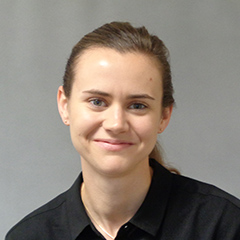Addison Larson is passionate about using spatial data analysis and visualization to improve programs and policies. She identifies creative ways to measure access to services and develops interactive spatial data visualizations to empower people to understand their data. Larson has experience in developing programming systems for data cleaning, analysis, and reporting in multiple research areas.
As the spatial data analytic lead for the Study to Measure Participant Access to WIC Authorized Vendors, Larson is creating census-tract level measures of convenient access to Special Supplemental Nutrition Program for Women, Infants, and Children (WIC) vendors, testing alternate definitions of convenient access, and identifying gaps in accessibility to WIC vendors across the United States. Larson also creates interactive maps for Head Start REACH that show Head Start provider locations and compare providers’ enrollment capacity to the estimated number of children eligible for Head Start. These maps enable state-level government agencies and other social service providers to find areas in need of additional Head Start providers. In addition, Larson helped produce the fall 2019, spring 2020, fall 2021, and spring 2022 Descriptive Data Tables and Study Design for Head Start: The Family and Child Experiences Survey by cleaning and analyzing nationally representative surveys of children ages 3 and 4 and their families, teachers, classrooms, centers, and programs. In her work on the Retaining Employment and Talent After Injury/Illness Network (RETAIN) Evaluation, Larson programs the evaluation of early impacts of the RETAIN demonstration across five states.
Before joining Mathematica in 2019, Larson worked at the Delaware Valley Regional Planning Commission in Philadelphia, Pennsylvania, where she analyzed data and created maps for transit and transportation projects in Greater Philadelphia. Larson holds an M.S. in geospatial information sciences from the University of Texas at Dallas.


